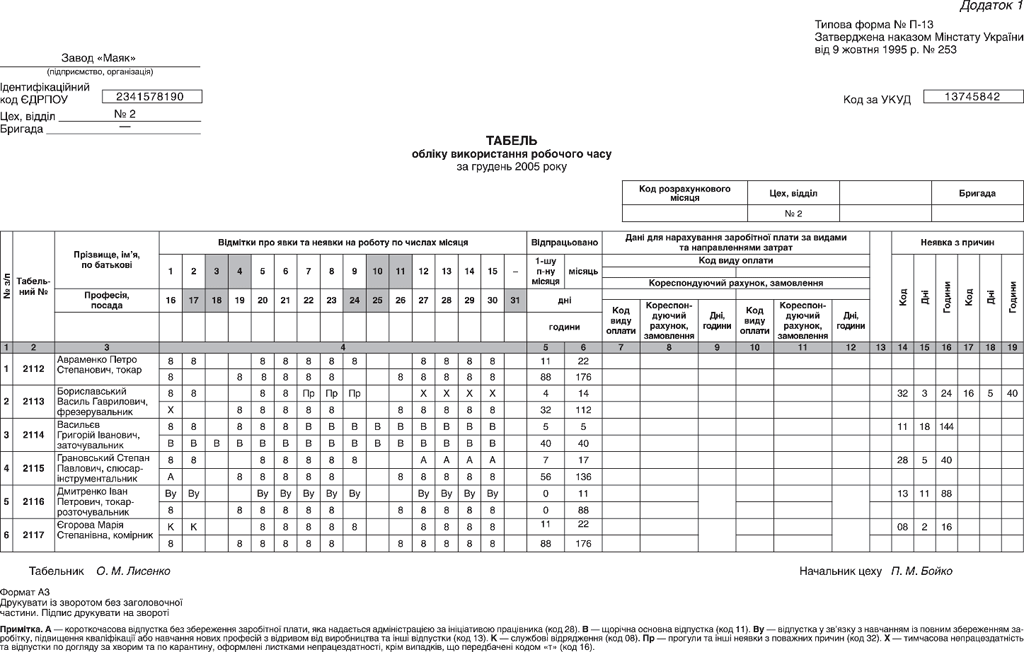
Tabelj Oblku Vdvduvannya Dtej Forma No 305
After herbivory, plants release volatile organic compounds from damaged foliage as well as from nearby undamaged leaves that attract herbivore enemies. Little is known about what controls the volatile emission differences between damaged and undamaged tissues and how these affect the orientation of herbivore enemies. We investigated volatile emission from damaged and adjacent undamaged foliage of black poplar ( P opulus nigra) after herbivory by gypsy moth ( L ymantria dispar) caterpillars and determined the compounds mediating the attraction of the gypsy moth parasitoid G lyptapanteles liparidis (Braconidae). Female parasitoids were more attracted to gypsy moth‐damaged leaves than to adjacent non‐damaged leaves. The most characteristic volatiles of damaged versus neighbouring undamaged leaves included terpenes, green leaf volatiles and nitrogen‐containing compounds, such as aldoximes and nitriles. Electrophysiological recordings and olfactometer bioassays demonstrated the importance of nitrogenous volatiles.
Lamps-table-and bridge I IfI No. 3 Size $2.50: After dinner cups and saucers Individually designed styling in the most becoming Heavy Gauge Tubs SPECIAL $1.39 New Unusual linen handkerchiefs earrings coiffure,taahien.S No. 2 sue $24)0) Housewares-Ivey's Fourth Floor SPECIAL I $1.50YOWELLDREWIVEY i Result: a long lasting wave-brushable and man e s. The outgoing air passed through a trap packed with 20 mg Super Q adsorbent (ARS, Inc., Gainesville, FL, USA) to retain the volatile compounds. Preliminary experiments detected no breakthrough of poplar volatiles from the traps under these conditions. Volatiles were collected for 4 h the second day after herbivore release on the plants.
Merawat mazda 323, mazda 323f apkope. Livret reparation et entretien mazda 323 bg, صيانة سياره مازدا. หัวเรื่องคำถาม: วิธีการใช้โปรแกรม arc info รายละเอียดคำถาม: อยากทราบว่ามีหนังสือเกี่ยวกับวิธีการใช้ โปรแกรม arc info หรือปล่าวค่ะ ถ้ามีสามารถหาซือ้. Rukovodstvo po ekspluatacii mazda 323f bg 2.
Under field conditions, parasitic Hymenoptera were more attracted to traps baited with these substances than most other compounds. The differences in volatile emission profiles between damaged and undamaged foliage appear to be regulated by jasmonate signalling and the local activation of volatile biosynthesis. We conclude that characteristic volatiles from damaged black poplar foliage are essential cues enabling parasitoids to find their hosts.
Volatile collection and analysis To investigate the local and systemic emission of volatiles from P. nigra after L. dispar feeding, two individual trees (approximately 1.20 m in height and 1 year old) of each of 20 different genotypes were selected (40 trees altogether). Twenty trees were then infested with gypsy moth caterpillars and the other 20 functioned as controls. Thus, each treatment contained 20 tree genotypes as replicates.
During the experiment, trees were kept in a climate chamber (humidity: 60%, day/night temperature: 20 °C/16 °C; 16 h light). The experiment was performed approximately 2 months after leaves started flushing. The young foliage of each tree was divided into two sections, basal and apical, based upon the position in the tree. Each section had 20–30 leaves and was enclosed with polyethylene terephthalate (PET) foil (Toppits ® Bratschlauch, Minden, Germany) (Fig. a). Seven fourth instar L. dispar caterpillars were released in the PET bags covering the basal section and allowed to feed for 41 h before volatile collection started. Caterpillars were allowed to remain on the trees during volatile collection to avoid possible mechanical damage to the tree caused by bag removal.
As a control, we also collected volatiles released from the insects themselves (and their frass) for 4 h right after these were removed from the trees ( shows the results). All measurements were performed in May 2011. Herbivory and following volatile collections were both carried out in a climate chamber (humidity: 60%, day/night temperature: 20 °C/16 °C; 16 h light). As the 40 plants could not be treated at the same time, the experiment was split up into four blocks, each block containing trees from each treatment. Emission of volatile compounds from herbivore‐damaged and adjacent undamaged leaves of P opulus nigra (black poplar) trees infested with L ymantria dispar (gypsy moth) caterpillars.
(a) The foliage of young trees established from cuttings of 20 different genotypes of old‐growth P. nigra was divided into basal and apical sections with polyethylene terephthalate (PET) foil and seven 4th‐instar caterpillars were released into the basal section. Download gta san andreas electric city torrent. A second set of PET foil‐divided trees was left as controls without caterpillars. After 41 h of caterpillar feeding, volatiles were collected using a dynamic headspace collection system and analysed by GC‐MS and GC‐FID. (b, c) Emission of major groups of volatiles was recorded from herbivore‐damaged and adjacent undamaged foliage in relation to control emission from corresponding regions of trees not subject to L. dispar herbivory.